When severe upheaval due to instances of events such as unexpected loss, trauma, illness, or major changes to one’s living arrangement, relationships status, or employment situation occurs, a person may develop a mental health condition known as adjustment disorder.
Understanding Adjustment Disorder
Learn about adjustment disorder
According to the fifth edition of the Diagnostic and Statistical Manual of Mental Disorders (DSM-5), adjustment disorder will typically set in within a few months of the activating event, and will cause a myriad of distressing symptoms for the affected individual. It must be highlighted that some stress is to be expected in response to certain scenarios, and is a completely normal human response. However an adjustment disorder’s symptoms are more pervasive and long-lasting.
At Bowling Green, we understand the ways that adjustment disorder can impact all aspects of a person’s life. Worry, sadness, anxiety, jitters, aches and pains, trouble sleeping, and difficulty concentrating are but a few of the common symptoms of this disorder. We know that the pain of an adjustment disorder may be exacerbated by a co-occurring substance use disorder, and Bowling Green is equipped to provide the type of life-changing care that addresses both types of maladies. Our comprehensive treatment program has helped many men and women overcome issues of mental health and chemical dependence, and go on to lead the happy, healthy lives that they so desire.
Statistics
Adjustment disorder statistics
Adjustment disorder is one of the most commonly diagnosed mental health conditions today. According to the DSM-5, adjustment disorder is identified in between 5% and 21% of all psychiatric consultations. Given this marked prevalence, quality treatment for Adjustment disorder has become more readily available.
Causes and Risk Factors
Causes and risk factors for adjustment disorder
Adjustment disorder is brought on by a stressful event or trauma of some kind. However, not every person who experiences this type of situation develops an adjustment disorder. This is due to the fact that the causes and risk factors for developing this mental health condition affect individuals in different ways.
Risk Factors:
While there is no guaranteed predictor that one who experiences acute stress will develop an adjustment disorder, there are some risk factors that have been shown to bring about the onset of this condition in many individuals, some of which are briefly described in the following:
- Chaos or violence in one’s surroundings or community
- Disaster situations such as flooding, earthquakes, or major storms
- Onset of a life-threatening illness, or one of chronic pain
- End of a primary partnership
- Major family changes such as having a child
- Death of a significant loved one or family member
- Unexpected job loss or retirement
- Financial loss or strain
- Difficulty in the work or school setting
- Major changes in personal or professional roles and responsibilities
- Conflict in important relationships
Signs and Symptoms
Signs and symptoms of adjustment disorder
The signs and symptoms of an adjustment disorder are person-specific, and typically relate to the event(s) that brought about the onset of the disease. While each individual may exhibit slightly different symptoms, some typical indicators of an adjustment disorder are outlined below:
Behavioral symptoms:
- Disinterest in participating in formerly enjoyed activities
- Shirking important responsibilities
- Bouts of crying
- Removing oneself from social situations or friendships
- Avoiding school or work
- Self-harm
- Uncharacteristic agitation or aggression
- Loss of ability to perform to potential at work or school
Physical symptoms:
- Prolonged physical tension
- Rapid heart rate or chest pains
- Bodily aches
- Trouble sleeping
Cognitive symptoms:
- Poor decision-making
- Thoughts of self-harm
- Trouble concentrating
- Slow processing speed
- Memory loss
- Inability to stay organized
Psychosocial symptoms:
- Pervasive sadness and worry
- Loss of hope for the future
- Anxiety or restlessness
- Sadness
- Depression
- Mood swings
- Nervousness
Effects
Effects of adjustment disorder
Adjustment disorder will typically last for approximately six months after initial onset. However, the presence of some factors may prolong this experience, making troubling symptoms worsen over time. Without intervention, an adjustment disorder may progress and could lead to the following:
- Co-occurring substance abuse
- Suicidal thoughts or behaviors
- Chronic mood fluctuation
- Loss of friendships
- Decline in performance at school or work
- Inability to maintain health relationships
- Financial hardship
- Job loss
When any of the above effects begin to take hold, it is likely that one will require professional help to resolve the symptoms of adjustment disorder.
Co-Occurring Disorders
Adjustment disorder and co-occurring disorders
It has been documented that there are certain mental health conditions that often occur at the same time as an adjustment disorder. Known as co-occurring disorders, these conditions must also be addressed during treatment in order for one to truly heal. A few of these disorders are listed below:
- Generalized anxiety disorder
- Bipolar disorder
- Specific phobias
- Obsessive-compulsive disorder
- Social anxiety disorder
- Depressive disorders
- Panic disorder



